In an unpublished fragment, Nietzsche gives the modern reader a sense of the ancients’ appetite for destruction:
When the victor, in a fight of the cities, according to the law of warfare, executes the whole male population and sells all the women and children into slavery…the Greek deemed it a positive necessity to allow his hatred to break forth unimpeded…I am afraid, we do not understand them enough in ‘Greek fashion’, and that we should even shudder, if for once we understand them thus.
Many Europeans would have disagreed with this notion as it was written in 1872. They believed that the great antipathies, which compelled the ‘Greek sculptor…to represent war and battles, endlessly repeated…the wounded doubled up in pain,’ had been safely overcome. Prior to 1914, war was not thought of in terms of mechanised warfare but regarded as an honourable or heroic pursuit; as historian Richard J. Evans makes clear, it was ‘like a duel, as it were, only on a much bigger scale’. The Metropolitan Museum of Art’s ‘World War I and the Visual Arts’ tries, through exploring avant-garde movements, propaganda, and the effects of nationalism, to register the gap between these pre-war assumptions, and the First World War’s brutal reality. The exhibition features more than 130 works (mostly from the Met’s collection, with some on loan), and follows the war chronologically from its outbreak in 1914 to points well beyond the 1918 armistice.
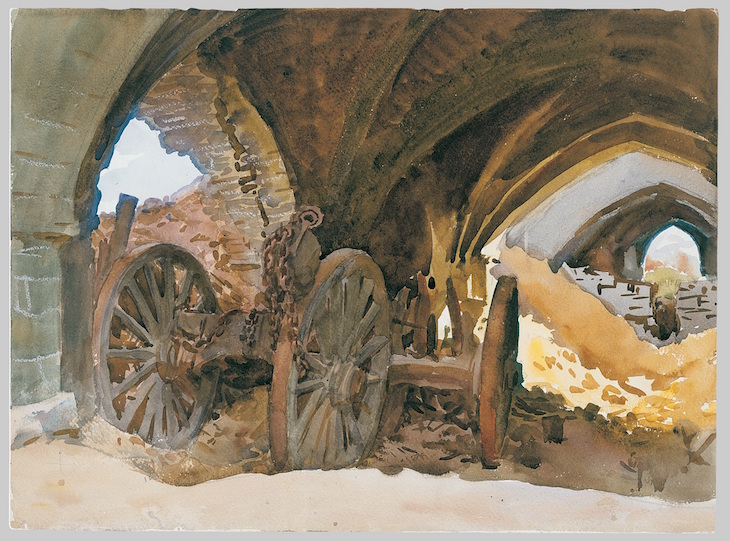
Wheels in Vault (1918), John Singer Sargent. Metropolitan Museum of Art, New York
The exhibition opens with propaganda posters from Germany, the United States, England, and Russia. The late Benedict Anderson’s theory that literacy and mass communication helped to make modern nationalism possible, sheds some light on their importance. They contain, in miniature, some of the messiness of early 20th-century European culture and politics. Easily reproducible and widely distributed, the success of the political posters was made possible by better technology, but also by the increased willingness of national militaries to make use of this technology – posters and radio obviously enough; and others, like a uniform written language and national newspapers.
However, this was still 19th-century nationalism, with a heroic, often individualised iconography (the exception is C.R.W. Nevinson’s poster for the War Office: a crimson sea of prickly bayonets). National symbols such as Le Coq Gaulois and Germania were more complex, hinting at the French revolution or the revolutions of 1848, as well as militarism and chauvinism. They are at a remove from the ultra-nationalist and fascist imagery of the interwar period.
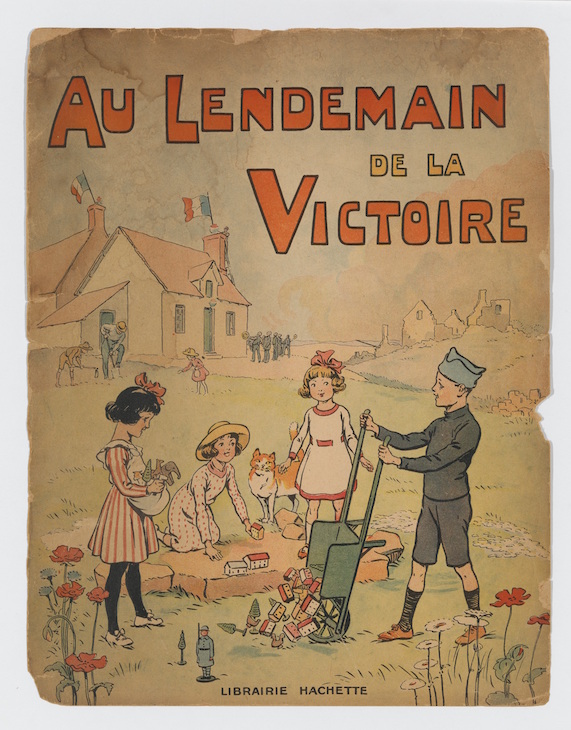
Au Lendemain de la Victoire (c. 1918), anonymous. Metropolitan Museum of Art, New York
The curators maintain that ‘some artists grew from avant-garde experimentation done before the war, while others embraced a more traditional approach’. This evenhandedness misses something important: the degree to which the catastrophe of the First World War made a return to ‘tradition’ all but impossible. Some, like Käthe Kollwitz, mourned, while others, like George Grosz, raged against the venality and immorality of the age. But from both we get the sense that pre-war modes of representation, like so much else, were not adequate anymore.
For the Futurists, the First World War could not come soon enough. Futurism saw war as the only ‘hygiene’ for a dying and bankrupt 19th-century bourgeois culture. War, on an industrial scale, was a necessary shock to Europe’s dead heart, a last chance at survival. In the end, Futurism was undone by the realisation of its aim. The reaction to the mechanised war, which they so admired, eventually split the Futurists between art deco and Fascist neoclassicism – with little room for its avant-garde origins.
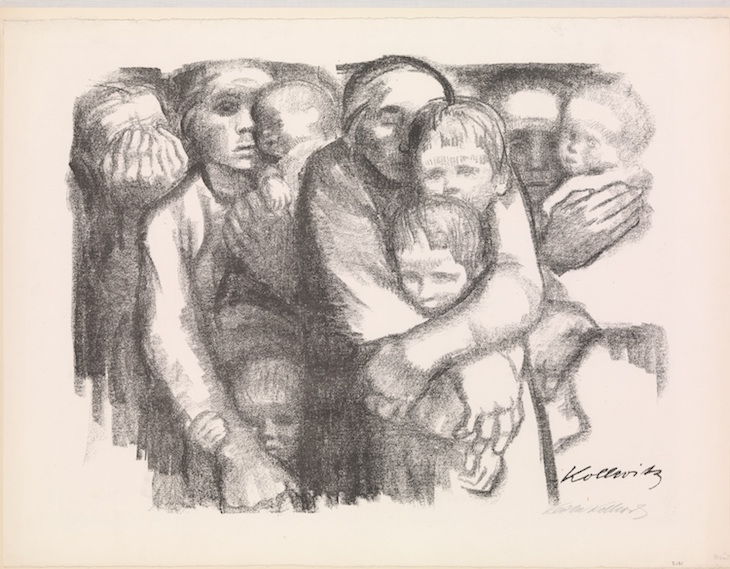
Mothers (1919), Käthe Kollwitz. Metropolitan Museum of Art, New York
Gino Severini is the only pure Futurist in the show. In a charcoal entitled Train in the City (1915), the speed and power of the train fracture an urban scene. A few feet from Edward Steichen’s aerial photograph of the destroyed town of Vaux, Train in the City looks more like buildings smouldering after a bombing raid than anything else. Maybe that was the point. Severini’s other works, like Flight Over Rheims (1915) aimed at synthesising man and machine, but the effect is too often merely substitution: one point of view for the other. The Futurists could never quite decide if humanity should become more machine-like or machines more human-like. In the end, Futurism itself produced relatively little as an avant-garde; however, it exerted a diffuse influence on many others.
Fernand Léger took what he wanted from the Futurists, and discarded the rest. He witnessed the worst of Verdun, and was hospitalised after a gas attack. Drawings for The Card Game (1915), made during his recovery, further explored Léger’s vision of a geometrical human-machine, updating Cézanne for a world torn between the violence and potential of industrialisation. The Card Game exemplifies two of Léger’s pre-war attitudes: the unbridgeable divide between visual experience and objective reality, and that modernity made the harmony of nature, or even the unity of things, impossible.
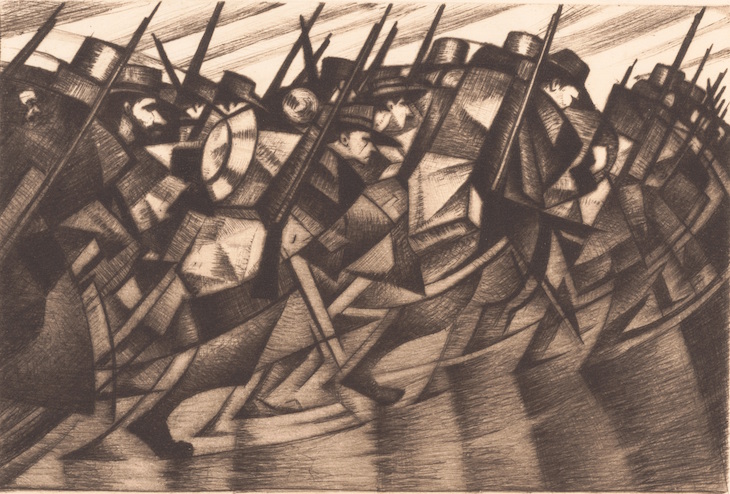
Returning to the Trenches (1916), C.R.W. Nevinson. Metropolitan Museum of Art, New York
While Léger and the Futurists were exploring the division and re-composition of the self, in Britain, C.R.W. Nevinson combined Futurism, Vorticism, and Cubism to almost the opposite end. With works like Returning to the Trenches (1916), Nevinson formed his signature style by depicting mass mobilisation in a comprehensible but still modernist idiom: soldiers as fractals of triangles and squares, marching across a flat plane. There’s not a hint of individualism, let alone heroism, to be found. He also worked within the bounds of figuration, employing a striking palette of browns and greys. The ink and gouache Tunnellers (1915) is hauntingly lonely, depicting a man with a gas mask extending a hand holding a caged canary into the darkness of the tunnel.
Many artists tried to capture the furious crowds and rows of mobilising soldiers. Théophile Steinlen’s sketches of crowds hover between reportage, nationalist propaganda, and social commentary; Pierre Bonnard’s battlefields are blurry and unfinished; and Natalia Goncharova’s lithographs combine Russian-Orthodox iconography with an idiosyncratic pre-war Cubism.
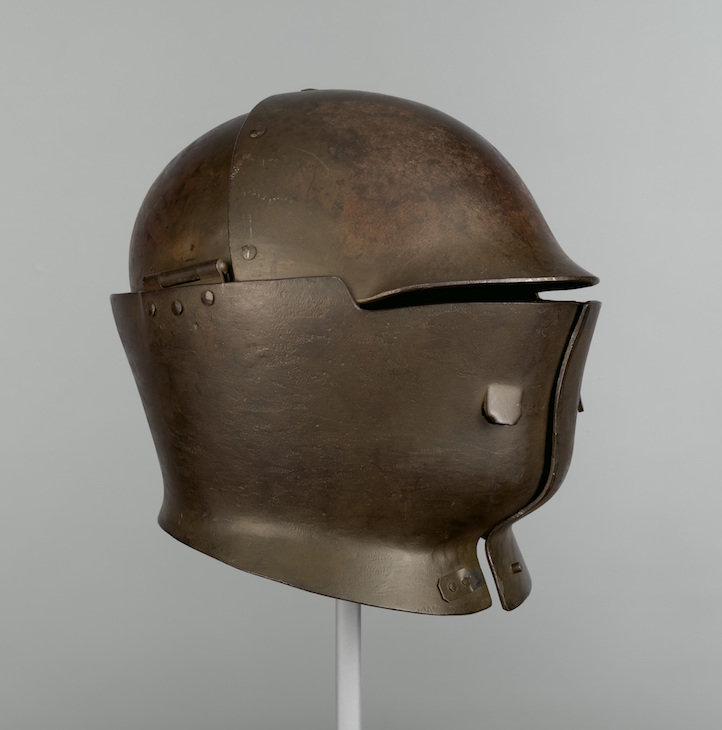
American Helmet Model No. 7, Sentinel’s Helmet (1918), W. H. Mullins Co. American, Salem, Ohio (1872–1974). Metropolitan Museum of Art, New York
The final room is dedicated to the war’s aftermath. Perhaps inevitably, Der Krieg (1924), Otto Dix’s monumental and total rebuke to war, dominates. The prints display suffering in all of its terrible diversity – the frailty of bodies, the pity, sorrows and contempt solicited by mass suffering. It is an achievement, radicalised by experience, worthy of its ancestors Cranach, Callot and Goya.
Yet despite his reputation as a visionary of the horrors to come, Dix looked backwards, not forwards. His war is a war of individual soldiers, not strategic bombing – of figures who are still in recognisable, if repulsive, human form, not the Muselmänner of the death camps. His ‘objective’ figuration is in search of some transhistorical truth. Part of Dix’s reputation rests on the claim that he, in some way, foresaw the coming of Nazism. But Der Krieg is not quite violent enough as a guide to Europe’s future. That is to say, despite carrying Nietzsche in his backpack, he didn’t understand things enough in the Greek fashion. It’s entirely unclear what it means that morally, today, perhaps we do.
‘World War I and the Visual Arts’ is at the Metropolitan Museum of Art, New York, until 7 January 2018.
Unlimited access from just $16 every 3 months
Subscribe to get unlimited and exclusive access to the top art stories, interviews and exhibition reviews.

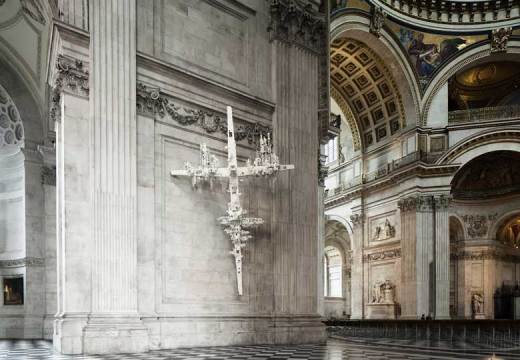
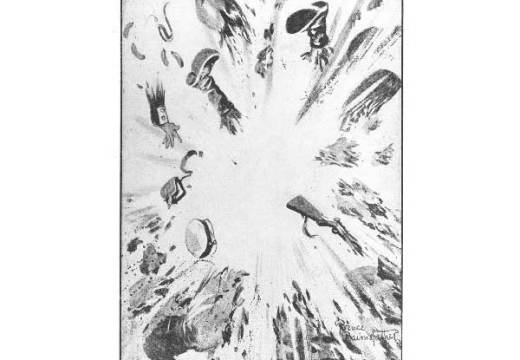










![Masterpiece [Re]discovery 2022. Photo: Ben Fisher Photography, courtesy of Masterpiece London](http://www.apollo-magazine.com/wp-content/uploads/2022/07/MPL2022_4263.jpg)
Has the Fitzwilliam lost the hang of things?